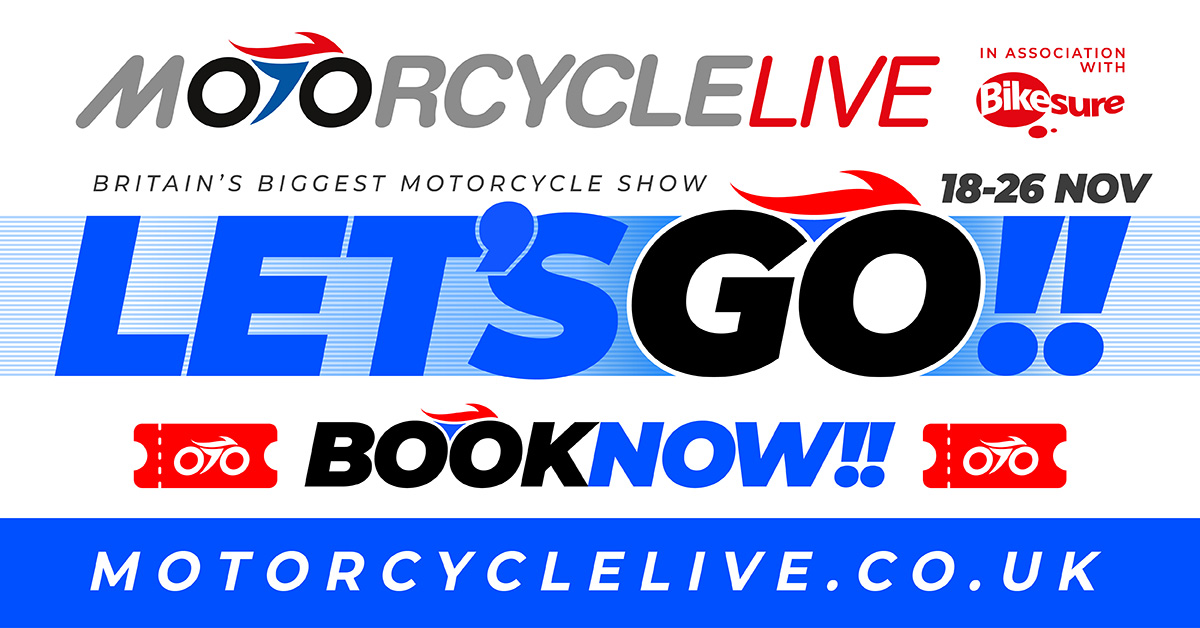What is a quad bike?
A quad is a motorised vehicle with four wheels, a maximum unladen weight of 400kg, and a maximum power of 15kW. If it’s intended to be used as a goods carrier, the maximum weight rises to 550kg. A “light quadricycle” is a four-wheeled vehicle with a maximum unladen weight of 350kg, a maximum spark ignition capacity of 50cc, or a maximum power of 4kW with maximum design speed of 45kph.
What’s the difference between a quad, ATV and buggy?
When it comes to being on the road, in the eyes of the law, absolutely nothing. They are all classed as Private Light Goods (PLG) vehicles: the same as roughly 89% of the licenced vehicles on UK roads.
Technically, an All-Terrain Vehicle (ATV) is any motorised vehicle which is designed to travel on four low-pressure tyres over unpaved surfaces, has a seat designed to be straddled by the operator and handlebars for steering control.
Buggies are generally considered to be vehicles with “side by side” seating designed for off-road use. They come with roll cages, although some ATVs also fall into this category. Quads can also be classed as light agricultural vehicles, but this is a tax issue and they don’t have pillion provisions (i.e. a seat for passengers).
How many seats does a quad or ATV have?
It depends. The government’s official advice says, “A quad bike can only carry passengers if it is designed to do so and has the right number of seats. Check with the manufacturer if you’re not sure.”
Some quads allow a passenger to sit on a seat behind the driver like on a motorcycle, whereas larger four-wheelers have a more conventional seat arrangement where two seats are located next to one another and two more behind. Some “side-by-side” ATVs have bench-style seating which may allow three people to sit next to each other.
“Sit-astride” agricultural ATVs are designed for a single operator and not built to take passengers. However, some four-wheeled utility vehicles (UTVs), or rough terrain vehicles (RTVs), may have additional purpose-built seating for passengers.
Does a quad or ATV have to have a roll cage?
A roll cage isn’t required by law on a PLG vehicle and a “sit-astride” ATV won’t have one. Some larger side-by-sides will have full roll cages and/or must be fitted with a roll-over protection system (ROPS) where there is a risk of rollover. If an ATV is used in forestry, it will need to be fitted with rollover protective structures and seat belts. An EU Directive also stipulates the same for UTVs of a particular specification.
Can I carry passengers on my quad or ATV on the road?
Yes, but only if the vehicle is designed by the manufacturer to take a passenger. There has to be proper passenger provisions, such as a seat and passenger foot pegs. The long seat on a sit-astride vehicle may look like it has room for a passenger, but it must not be used in this way. The extra space is to allow a single operator to manoeuvre themselves.
The law also states that the same restrictions apply as for motorcycles. So if a passenger’s feet can’t reach the foot pegs, or they aren’t secure (which might apply to younger passengers), they aren’t allowed to be a passenger. If the vehicle is registered for agricultural use, it can’t take passengers on the road.
Do I need a driving licence to ride a quad or ATV?
You need a full UK car driving licence (category B or B1) to ride one of these vehicles on the road. A motorcycle licence doesn’t give you the legal right to ride four-wheelers on the road unless you have B1 entitlement. If you are riding on privately owned land, you don’t need a licence: www.gov.uk/quad-bikes-the-rules.
Can I ride a quad or ATV on a Provisional licence?
No. The law states, “To drive a quad bike on the road you need to have a full car licence or a category B1 licence if it was issued before January 1997.”
However, you don’t need a licence to ride these vehicles “off-road” (e.g. on private land).
Can I ride a quad or ATV on a Motorcycle licence?
No, you can only ride these vehicles on the road if you have a full car licence with category B or B1 entitlement. It is only certain classes of three-wheeled vehicles that can be ridden using a motorcycle licence, which is why Del Boy had a Reliant Regal…
Do I need to use L plates on a quad or ATV?
As you need a full driving licence to drive these vehicles, you should have no need for L plates.
What fuel do quads take?
Most run on standard unleaded fuel. However, a few agricultural ATVs were built with diesel motors to allow the use of “red” agricultural diesel. In general, they will either run on unleaded or unleaded with two-stroke oil added if it has a two-stroke engine.
Can I use winter tyres on my quad during the summer?
As long as they are road-homologated, there is nothing to stop you using winter tyres in summer. The cost of replacing them might end up being expensive as the softer rubber from which they are made wears far faster on dry roads than cold winter roads.
Do I have to tax my ATV?
Yes, you’ll need tax if you want to ride it on the road. However, a quad can be taxed as either a limited use vehicle or an agricultural vehicle, depending on how you intend to use it. There is no tax to pay if it’s going to be used for agriculture, horticulture or forestry, but an ATV intended for road use is classed as a PLG vehicle and subject to tax at the prevailing rate.
Does my ATV need an MOT?
If you want to ride on the road then you need a V5C registration certificate, MOT, tax and insurance. If you plan on riding only off-road on private land, you don’t need an MOT. If your vehicle is registered for agricultural, horticultural or forestry use, it doesn’t need an MOT or tax but it must be road registered, insured and licensed for road use if it’s more than three years old.
Does my quad need a registration plate?
Yes, if you want to ride it on the road. This means it needs a registration number plate displayed at the front and rear of the vehicle and therefore a V5C registration certificate (logbook) from the DVLA. If you plan on riding only off-road on private land, you don’t need a registration plate.
Do I need insurance to ride an ATV?
Yes, if you are riding on the public highway (and this includes green lanes) then you legally require a minimum of third party insurance. If you are on private land, you don’t need insurance. However, if you’re riding on public roads to get to private land, you will need insurance.
Where can I ride my ATV?
If your vehicle is road registered, insured, taxed and has an MOT certificate and you have a full car licence (category B or B1), you can ride on public highways.
You can also ride it on roads classified as “Public Right of Way” or byways. These are often called green lanes, but also known as BOATs (Byway Open to All Traffic), Unclassified County Roads, white roads or G roads.
If it isn’t road registered, then you are restricted to riding your ATV “off road” (i.e. on privately owned land only, as long as you have permission from the landowner).
Can I ride my quad on public roads?
Yes, as long as it is road registered, insured, taxed, has an MOT and you have the correct licence, you can ride on pubic highways. Otherwise, you can only ride it on privately owned land, and only then if the landowner has given you permission.
Do I need permission to ride my quad or ATV on private land?
Yes, you will require permission from the landowner to ride on their land otherwise you can be accused of trespass and your vehicle can be impounded by the police. You should always ask permission rather than forgiveness because ATVs are noisy and it’s unlikely you’ll go unnoticed. You never know, the owner may well say yes and even make you aware of certain features of their land to look out for.
If you are considering riding on land that is privately owned but may be open to the public, a forest perhaps – you should seek permission from the land owner and check with the local authorities about any other restrictions that may apply.
How does an ATV handle compared to a bike?
Most four-wheelers have a solid rear axle, which means that the rear wheels can’t turn independently of one another as on a car with a differential. In reality this means the vehicle needs to be under power to turn and that’s where accidents can happen. If you shut the throttle and try and turn the ATV, which is a natural reaction in an emergency or panic situation, it can be very sluggish to respond and that’s what causes accidents.
Do I need training to ride an ATV?
Legally you don’t need any training to ride on the road, but due to some of the handling challenges it’s always best to seek some guidance. The European ATV Safety Institute (EASI) is a non-profit organisation that provides safety courses.
Do I need to wear a helmet or other protective clothing to ride a quad or ATV?
Legally, you don’t need to wear a helmet, even on the public highway, although we recommend you do. In terms of protective clothing, as in a car, legally all you need to wear is enough clothing to avoid breaking any public decency laws. But again, we recommend you wear protective clothing along with a helmet. Better safe than sorry.
What age can someone ride a quad or ATV?
It depends on the type of quad and the age of the child. On the road you can ride an ATV as soon as you hold a full driving licence (category B or B1), which is 17 years old. Off-road, on private land, there is no age restriction but this doesn’t mean any child can ride any of these vehicles. Other regulations apply that limit the speed of the ATV and age of its rider.
Can children ride quads and ATVs?
If you are seventeen and hold a full licence, you may ride a quad on the road (assuming you’ve met all the other requirements like having the right tax, insurance and licence plates etc.).
If you have permission to ride on private land, children of a certain age and ability may also be able to ride an ATV if it is designed for them, check with the manufacturer first – and they can maintain proper and safe control.
Point 4 of the All-Terrain Motor Vehicles (Safety) Regulations 1989 states that for persons twelve and under:
- No one should supply a regulated vehicle with four wheels, that is designed or intended for someone under the age of twelve, if its maximum speed is greater than 15 mph.
- Neither should a vehicle be supplied that is fitted with a regulator that doesn’t limit the top speed to 10mph.
For children between twelve and sixteen, point 5 of the same regulation is similar, but the respective top speeds are 30mph and if a regulator is fitted, 15mph. It also states that it should have a very clear label on it saying: THIS ATV IS NOT SUITABLE FOR A CHILD UNDER 12 YEARS.
The Health and Safety Executive also advises:
- Never carry a child as a passenger. It is illegal and will reduce your ability to control the ATV.
- Children under 13 years old are prohibited from using an ATV for work. Over-13s should only ride ATVs of an appropriate size and power after formal training on a low-power ATV.
- Children under 16 years old are prohibited from using most adult-sized machines. Check and adhere to the manufacturer’s minimum age recommendations for your ATV; this information may be displayed on the machine and in operator manuals. Similar restrictions apply to side-by-side machines.
- The ratio of a child’s weight to that of the ATV is significant, as weight transfer is the key to safe handling.
- In the event of an overturn, a child may be crushed by the weight of an adult-size.
The government has also set out minimum ages to drive agricultural vehicles, which might apply depending on who is doing the riding and where.
Can I ride my quad to work?
It depends. You can if you really want to, as long as you have a full car driving licence (category B or B1) and the vehicle is road registered, insured, taxed, has an MOT, front and rear licence plates and lights.
If you’re using an agricultural ATV on the road, to get to and from the private land where you work – it doesn’t need an MOT, but must be registered and licensed for road use and must have a number plate and third party insurance. If it’s being used on the road after dark, it will also need different types of lights depending on how fast it can go.
Does my employer need to provide me with training if I have to use a quad or ATV at work?
As it says on the Health and Safety Executive’s website, the Provision and Use of Work Equipment Regulations 1998 (PUWER) states that if an employer supplies a n ATV to an employee then it is their statutory duty to ensure “adequate training” has been undertaken.
Can I use my quad or ATV on the farm or for agricultural use?
Yes. A farm is classed as private land so you can ride on it even if it isn’t road registered. Just be aware that if you need to cross or ride on any public roads to gain access to the farm, or its land, then it will need to be road registered, insured, have number plates and insurance. It will also need lights if it’s being used after dark.
Can I use my ATV for green laning?
Yes. These are roads classified as “Public Right of Way” or byways but are often called green lanes and may not even bear any resemblance to a normal road i.e. it may appear to be a dirt track. They’re also known as BOATs (Byway Open to All Traffic), Unclassified County Roads, white roads or G roads.
You’ll still need a full car driving licence (category B or B1) and the vehicle must be road registered, insured, taxed and have a valid MOT certificate.
Can I customise my ATV?
Yes, you can. There are many firms that offer customisation kits, but if you alter its specification in any way you should always let your insurer know of the modification. Check your policy, even if you’re only changing the tyres. It will tell you what your insurer needs to know and when. If it doesn’t, or it’s not clear or you’re in any doubt, tell them anyway. Making your insurer aware will allow them to consider the effect on your policy and make adjustments. It will also allow you to know you have the right level of protection in place.
Also, if you buy a used vehicle, it may not be possible to identify if any modifications have been made to it so it’s always best to ask if the owner has changed anything. Modifying your vehicle may also affect what it can and can’t be used for and where e.g. it may not be road legal after modifying it. If you want to ride it on public roads it must comply with the European Community Whole Vehicle Type Approval directive (ECWVTA) and potentially be inspected under the Motorcycle Single Vehicle Approval scheme.
Can I convert my ATV for use on public roads?
Yes, and it is essential for you to do so if you want to ride it on public roads. The law states that, “Quad bikes must be approved, registered, taxed and have an MOT (if needed) to be used on the road. Most bikes can’t be used on the road because they don’t meet road safety standards. Check with the manufacturer if your quad bike has been approved for road use. If your bike hasn’t been approved but meets road safety standards you can apply for ‘type approval‘.
Type approval means that your quad must comply with the European Community Whole Vehicle Type Approval (ECWVTA) directive and have a certificate of conformity to prove that it does. If it doesn’t have that certificate it must be inspected under the Motorcycle Single Vehicle Approval scheme.
If you want to ride on the road, buying a quad that’s already road legal can save you a lot of time, money and effort.
How fast can an ATV go?
The land speed record for a quad is 196.19mph, which is a bit faster than most quads go! As with cars, there are fast quads and slow quads, it just depends on how the manufacturer has designed the vehicle and what it is targeted to do. Most quads that are road registered are capable of 50mph, however some agricultural vehicles are speed restricted depending on their lights. Obviously though, however fast your quad may be capable of going, you’ll need to stick to the appropriate speed limit for the road you’re on.
Are quads exempt from parking fines and congestion charges?
No, they are not exempt from congestion charges or parking fines – they are viewed in exactly the same way as a normal car and therefore you are required to pay any fines, penalties or charges incurred.
Can I hire a quad or ATV?
Yes, there are loads of off-road centres all over the UK that offer quad or ATV experience days. The best idea if you are serious about buying one is to pop to your local quad bike dealership and see who they recommend in your local area.
Do I need to register my ATV with DVLA?
If you plan on taking your quad or ATV on public roads it will need to be taxed, have an MOT, front and rear number plates, and it must be registered with the DVLA to get a registration number. You’ll also need insurance and lights if you want to use it after dark.
If, however, you aren’t planning on taking it on public roads, then there is no legal obligation to register it with DVLA. Theft is an issue with quad bikes and it is a good idea to register any ATV with the “off-road register”, which improves the chances of it being returned should it get stolen.
If you plan on using your quad for forestry, horticulture or agriculture work, you’ll need to register it as a “light agricultural vehicle” although it won’t need an MOT.
What is the off-road register?
The off-road register is a scheme set up by the DVLA that is a registry of all off-road vehicles which includes quads, ATVs, motorcycles, construction and plant machinery in order to improve detection rates in theft. To join you need to fill in an “Application for a first tax disc and registration of a used motor vehicle” (V55/5) and sign a declaration that the vehicle won’t be used on the public roads.
After providing evidence of the vehicle’s Vehicle Identification Number (VIN), engine number and proof of ownership, you also send a photocopy of your photo card driving licence as proof of name and address (other ID is acceptable). The service is free and four weeks later you will receive a V5C registration certificate.
What is Single Vehicle Type Approval?
“Motorcycle Single Vehicle Approval is a pre-registration inspection for mopeds, motorcycles, three wheelers and quadricycles that have not been “type-approved” to European standards. The main purpose of the scheme is to ensure that these vehicles have been designed and constructed to modern safety and environmental standards before they can be used on public roads.”
The MSVA basically checks that vehicles built for non-European Economic Area (EEA) markets comply with British law. It will also apply to an amateur built vehicle, a vehicle manufactured in very low volume, a vehicle manufactured using parts of a registered vehicle, a rebuilt vehicle (mandatory if first licensing and registration required) and an imported vehicle without type approval. So if you’ve bought a customised quad, or one not originally built for the UK market, it may well need an MSVA (if it doesn’t already have one).
If your vehicle passes the MSVA inspection, you will be given a Minister’s Approval Certificate (MAC) which means you can apply for a V5C registration number from the DVLA.
How do I protect my quad from being stolen?
Protecting any vehicle from being stolen is very hard, however when in a garage it should be secured to a ground anchor through a section of the frame using a good quality chain and lock. If you are unsure of the lock, chain or anchor’s quality, look for a Thatcham approval sticker. If the vehicle is stolen, you can take measures beforehand that improve the chances of it being recovered.
There are vehicle identification kits such as SmartWater or Datatag, which permanently mark the vehicle with identification marks. Another solution is to fit a tracker system. These are small devices that are hidden on the vehicle and automatically send out the vehicle’s location, meaning the police can trace it.
Do I have to tell my insurer if I customise my ATV, or change any of the parts?
Check your policy, even if you’re only changing the tyres, which you may need to do if the ones supplied when you bought it aren’t road legal (but should be). It will tell you what your insurer needs to know and when. If it doesn’t, or it’s not clear or you’re in any doubt, tell them anyway. Making your insurer aware will allow them to consider the effect on your policy and make adjustments. It will also allow you to know you have the right level of protection in place.
How does tyre tread and pressure affect the handling?
First and foremost, stick to the manufacturer’s recommendations because inflating or deflating tyres outside of the recommended range of pressures may affect the handling in unpredictable or unsafe ways. Running tyres at the incorrect pressure may also void a warranty. Also make sure you have the correct tyres fitted for the conditions i.e. you may need different tyres for on and off-road environments or wet versus dry weather.
In off-road conditions, low tyre pressures may allow tyres to distort, giving them a greater contact surface area and increased traction over ruts, stones, mud and tree roots. On the road however, low pressures can cause the tread pattern to move around too much, creating a weaving sensation in the quad’s handling. This feeling can be exaggerated by off-road knobbly tread patterns, which are also designed to move and effectively grip obstacles.
Importantly, to run a quad on the road you need road-homologated tyres, which can be identified by a small circle with an E in it on the sidewall. These can either be more off-road or on-road orientated. Off-road tyres often have very knobbly tread patterns whereas road tyres tend to have a lower profile and smoother tread.
What government rules and regulations apply to ATVs?
The government has a web page set up explaining the rules for quad bikes here which apply to the public and employers: https://www.gov.uk/quad-bikes-the-rules. While the All-Terrain Vehicles (Safety) Regulations 1989 are aimed at manufacturers of quads and ATVs, they also contain information about passengers and children riding quads.
If you want to ride your quad or ATV on public roads, it must also comply with the European Community Whole Vehicle Type Approval directive (ECWVTA) if it doesn’t already do so e.g. if it wasn’t originally built for the UK market.
What health and safety rules and regulations apply to ATVs?
The Provision and Use of Work Equipment Regulations 1998 (PUWER) states that if an employer supplies a quad or ATV to an employee then it is their statuary duty to ensure that “adequate training” has been undertaken. In addition, the Health and Safety Executive (HSE) guidance states several guidelines when it comes to using quads and ATVs at work.
What are the rules around ATVs for forestry, horticulture and agricultural use?
A quad or ATV used for agriculture, forestry or horticulture needs to be registered as a “light agricultural vehicle” and therefore doesn’t require an MOT to be used on the road or vehicle tax. According to UK law, quads registered as light agricultural vehicles can’t take passengers, however ATVs can but those registered for forestry use need to be fitted with rollover protective structures and seat belts. For more details, see the government’s rules for quad bikes: www.gov.uk/quad-bikes-the-rules.
The Health and Safety Executive (HSE) has published a range of guidelines relating to the safe use of ATVs in forestry and agriculture, and specific guidelines in relation to tree working. The Provision and Use of Work Equipment Regulations 1998 (PUWER) states that if an employer supplies a quad or ATV to an employee then it is their statuary duty to ensure that “adequate training” has been undertaken. The Health and Safety Executive (HSE) also publishes guidelines in relation to using quads and ATVs at work.
What are the BORDER, Lantra and EASI training courses?
The British Off Road Driving Association (BORDA), Lantra and the European Safety Institute (EASI) all offer training courses and qualifications on ATV and quad bike riding as well as safety when working with them. These are just a few of the courses on offer, other training providers include Beyond Driving who also offer a range of quad and ATV training courses.
What does the E mean on the tread of my quad’s tyres?
The E in a small circle on a tyre’s sidewall means it is approved for use on Europe’s roads. If the tyre doesn’t have this, it isn’t legally allowed to be used on a road-going vehicle and you can face legal action and possibly penalty points on your driving licence if you are caught riding on the road with them. If you only plan to ride off-road your tyres don’t require an E mark.








